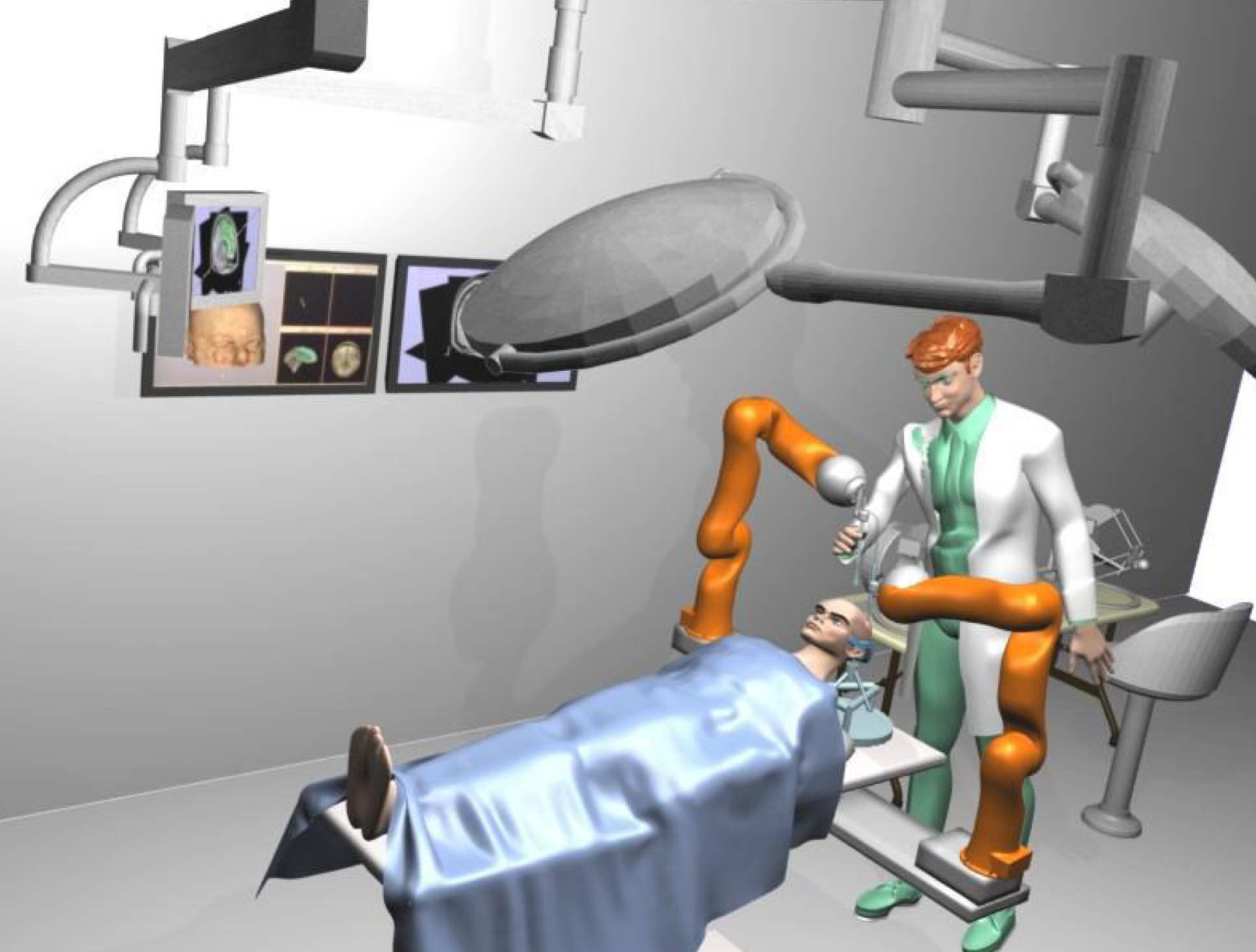Active constraints for robot-assisted neurosurgery
Active Constraints (also referred to as 'Virtual Fixtures') are a collaborative robot control strategy where the robot augments a surgeon's abilities by preventing motion into delicate tissue regions and encouraging motion which follows a pre-operatively defined plan. Active constraints for orthopaedic surgery were pioneered in the Mechatronics in Medicine Laboratory with the Active Constraint Robot, 'Acrobot', which is now developed commercially as the 'Stanmore Sculptor RGA (Robotic Guidance Arm)' by Stanmore Implants Worldwide Ltd.
Orthopaedic surgery presents an uncharacteristically rigid environment in which active constraints can be utilised. In many procedures, the surgeon directly interacts with soft tissue which displaces and deforms throughout. In these cases 'dynamic active constraints', which accommodate for this intra-operative variation, are required.
- Dynamic Frictional Constraints for Robot Assisted Surgery (YouTube link).
FP7 ACTIVE, Eurpean project
ACTIVE is a 4 year European project (Framework 7 funding) to develop a robot-assisted neurosurgical suite for the diagnosis and treatment of epilepsy. Visit www.active-fp7.eu for more information.

Project consortium:
Politecnico di Milano (Italy, coordinator), Consiglio Nazionale delle Richerche (Italy), Imperial College (UK), Karlsruhe Institute of Technologie (Germany), Italian Institute of Technology (Italy), Technion – Israel Institute of Technology (Israel), Technische Universität München (Germany), Deutsches Forschingszentrum Fuer Kuenstliche Intelligenz GmbH DFKI (Germany), Department of Presurgical Epileptological Evaluation DDEP (Italy), Functional Brain Center (Israel), Force Dimension (Switzerland), Kuka Laboratories GmbH (Germany), Renishaw Ltd. (Ireland), Medimaton Ltd. (UK), CF consulting S.r.l. (Italy)


